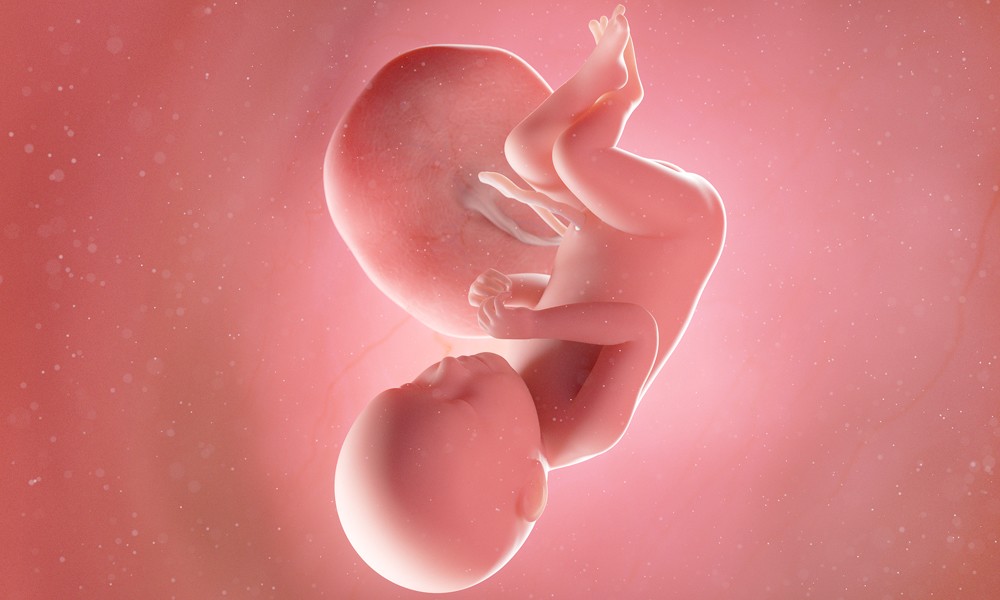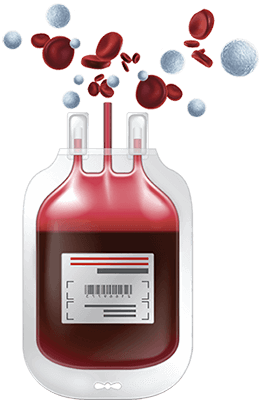Canada's Largest & Oldest Cord Blood Bank
Congratulation! You are now the proud mama of a baby that is full term.
This Week’s Highlights
Your baby is now sensitive to light
Your baby’s bones are now starting to harden
You will have your multiple marker screening test
Your Baby at 39 Weeks
Your baby is the size of a pumpkin, measuring about 20 inches (50.7 centimeters) long and weighing in at about 7.2 pound (3.3 kilograms). He or she is now fully developed and ready to meet you anytime now.

Baby Development at Week 39
Your baby now has a thick layer of fat over the blood vessels, so his or her skin is no longer pink and appears white. Pigmentation will only develop after birth. Similarly, the pigmentation on your baby’s iris will not set until a few months after birth. Did you know this pigmentations in our eyes is as unique as our fingerprints?
This week your healthcare provider will check to make sure the baby is still in position with his or her head down. They will also check your cervix for dilation (opening) and thinning (effacement) during a pelvic exam. While dilation and effacement are signs of labour, it is impossible to predict when your labour will begin based on these measurements.

Pregancy Tip
If your mom, sister or friend wants to come and help with the baby, let them. This will allow you to make the baby your top priority, and you will have the time to get some much needed rest.

Can My Child’s Cord Blood / Cord Tissue Stem Cells be Used for Other Family Members?
There is a high probability that your child’s cord blood stem cells can be used for siblings and other family members. Your child’s cord blood stem cells will be a perfect match to your child. However, it may also be very useful for other members of your family. There is a 25% chance that your child’s cord blood can be used for one of his/her siblings, and there is also a high chance that your child’s cord blood stem cells can be used for parents or grandparents.
Since cord tissue matching is less stringent than cord blood matching parents have a 100% chance of being compatible, 75% for siblings and 25% chance of a match for grandparents.
How Your Body is Changing at 39 Week
At this stage, you are likely feeling a bit of discomfort from your growing belly (who are we kidding) . Until your baby decides it is time to come out, try to relax and focus on the small tasks as much as possible.
Labour may begin this week. Watch out for signs of early labour, such as constant contractions, loosing your mucous plug, back pain and your water breaking.
Most healthcare providers will not consider inducing labour 7-14 days after your due date. In the mean time, there are natural ways to speed up the process such as sex, walking, climbing stairs, or a membrane sweep. A “sweep” is performed during a pelvic exam, where the healthcare provider sweeps or separates the membranes in your cervix. This induces the release of prostaglandins involved in inducing labour.
Take this time to finalize your birth plan (if you have one), and to familiarize yourself with pain relief methods and labour positions that will make your birthing process more comfortable.
How Far Along are You?
39 weeks in, 1 weeks to go! You are almost at the end of your pregnancy. Even though pregnancy is measured in weeks this means you are in your last month of your pregnancy.
Natural Ways to Induce Labour
If you have received the go ahead from your healthcare provider, here are some natural methods that may coax your body into labour.

Walking– Walking and your upright posture can help your baby move down in your pelvis into a better position. It is also thought that the pressure of your baby’s head on your cervix when you walk stimulates the release of oxytocin, the hormone that triggers contractions.
Sex– Orgasms can release oxytocin, the hormone that triggers contractions, jump starting labour. In addition, sperm contains prostaglandins, hormones that dilate and thin out the cervix.
Spicy food– It is believed that spicy food may irritate the lining of the stomach, resulting in contractions.
Nipple stimulation– Again as with sex, nipple stimulation may lead to oxytocin release, jump starting labour.
Have you packed your hospital bag yet?
Are You Getting Excited to Meet Your Baby?
Pregnancy Symptoms at Week 39
Changes in vaginal discharge – It is normal to notice changes in vagina discharge at this stage of pregnancy. But, if this discharge looks watery it may be amniotic fluid. In this case, you will need to contact your healthcare provider. You may also notice pinkish (blood-tinged) vaginal discharge when you lose your mucous plug. Loosing your mucous plug may be a sign of impending labour.
Leaky boobs – Your breast start making colostrum in the first trimester. Colostrum is is the term for that first milk, which is packed with antibodies that your baby, will receive. You may experience leaky boobs in the third trimester because the levels of prolactin, the hormone that revs up milk production, keeps steadily increasing. Small leaks in colostrum during this stage of pregnancy are normal. You may want to consider putting nursing pads inside your bra to catch the overflow.
Pelvic pain – Around 80% of moms-to-be experience pelvic pain, mainly in the third trimester. It will become more noticeable following lightening, when the baby drops down to the pelvic area. Pelvic pain can range from being a minor discomfort to extreme pain when walking. You will want to distinguish between pelvic pain and pelvic pressure, since pelvic pressure is a sign of labour. Pelvic pressure is felt in the pelvis and the rectum, and is similar to the menstrual cramps and groin pain. Pelvic pressure is also associated with back pain.
Braxton Hicks contractions – Braxton Hicks contractions are named after Dr. John Braxton Hicks, who first described them. They are the result of muscles in your uterus flexing, preparing your body for labour. However, unlike true labour contractions, they are not strong enough to push your baby out. Braxton Hicks contractions often go away when you shift your position. They are also irregular and do not last for more than 1 minute.
Hemorrhoids – Did you know that the increase in your blood volume is also behind your haemorrhoids? They are caused by dilated blood vessels in your rectal area, as the blood volume and flow is increased. You can adopt preventative strategies such as including more fibre in your diet and drinking more water to avoid haemorrhoids. Warm baths can help sooth existing haemorrhoids.
Dry, itchy skin – As your belly and breasts grow, the stretching skin can often cause itchiness. Staying hydrated and applying moisturizer can help minimize the dryness and the itchiness.



